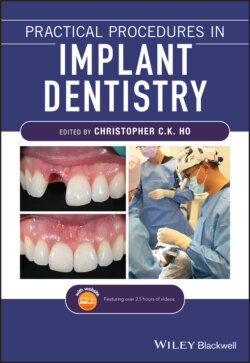Читать книгу Practical Procedures in Implant Dentistry - Группа авторов - Страница 30
3.1.1.1 Three‐Dimensional Imaging
ОглавлениеComputed tomography (CT) has revolutionised treatment planning for dental implants. It provides a vast array of images in high resolution, such as panoramic, cross‐sectional, axial, and 3D. The major drawbacks are cost, accessibility, and higher radiation dosage. With radiation dosage in mind, the advent of cone beam computed tomography (CBCT) scanners in the late 1990s have been designed for the maxillofacial region. CBCT imaging reduces the radiation exposure to the patient and is also more accessible as many dental offices and radiology centres possess these machines. CBCT provides high‐resolution images allowing visualisation of anatomical structures and identification of local pathology, and provides multiplanar views of the tissue volume to be investigated. CBCT utilises a cone‐shaped X‐ray beam with both the source and detector rotating around the patient. It is currently the recommended comprehensive diagnostic method to obtain a comprehensive analysis for implant placement. The American Academy of Oral and Maxillofacial Radiology consider the CBCT as a standard of care examination for dental implant planning [2].
Radiographic imaging aims to follow the ALARA principle, which is to use a dose that is as low as reasonably achievable. Intra‐oral radiographs and orthopantomograms typically deliver dosage equivalent to days of background radiation, while the CBCT emits dosages of a week or more of additional background radiation. CT imaging is equivalent to several weeks of background radiation. The CBCT allows selection of smaller field of view (FOV) and by restricting it to the region of interest (ROI) there is a reduction in the effective dose of radiation (Table 3.1).
Table 3.1 Ionising radiation dosage chart: comparing background radiation to both dental, medical and the yearly Australian safety limit.
Sources: Ludlow, J.B., Davies‐Ludlow, L.E., Brooks, S.L. et al. (2006). Dosimetry of 3 CBCT devices for oral and maxillofacial radiology. Dentomaxillofac. Rad. 35: 219–226; White, S.C. and Pharaoh, M.J. (2009). Oral Radiology: Principles and Interpretation. St. Louis, MO: Mosby Elsevier; Australian Radiation Protection and Nuclear Safety Agency (2016). Radiation Protection in Planned Exposure Situations. ARPANSAR.
| Procedure | Effective dose (μSv) | Dose as days of equivalent background radiation |
|---|---|---|
| 1 day of background radiation (sea level) | 7–8 | 1 |
| 1 dental PA radiograph | 6 | 1 |
| Kodak CBCT focused field anterior | 4.7 | 0.71 |
| Kodak CBCT focused field maxillary posterior | 9.8 | 1.4 |
| Kodak CBCT focused field mandibular posterior | 38.3 | 5.47 |
| Chest X‐ray | 170 | 25 |
| Medical CT (head) | 2000 | 1515 |
| Federal occupational safety limit per year (Australia) | The current legal limit of radiation exposure for Australian workers is 20 000 μSv/y averaged over 5 years, and not more than 50 000 μSv received in any 1 year for effective (whole‐body) dose |
The limitation with CBCT is in assessment of soft tissue volume and the use of CT imaging is preferred if an assessment of soft tissue volumes is needed. A further limitation for both CT and CBCT is artefacts from the presence of radiopaque restorations and implants. This can be seen as cupping (distortion of metallic objects), beam hardening (dark streaks between dense objects), scatter, and motion artefacts (longer exposure times are vulnerable to patient movement).
